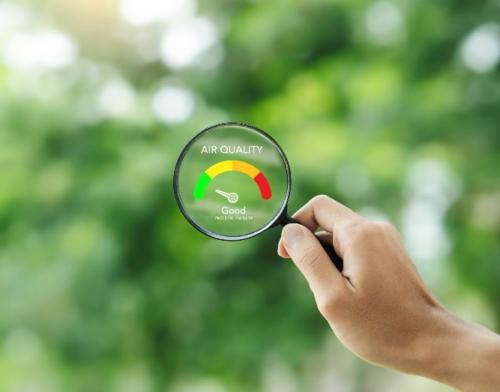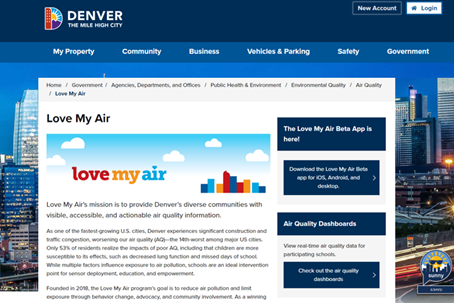Community Monitoring 101: Safeguarding Public Health & Air Quality

Today, as in the past, the Clean Air Act continues to cut pollution and protect the health of American families and workers. Fewer premature deaths and illnesses means Americans experience longer lives, better quality of life, lower medical expenses, fewer school absences, and better worker productivity.
Community air monitoring is a vital practice aimed at safeguarding public health and environmental quality by monitoring air pollutants in residential areas, industrial zones, and urban environments. By continuously measuring air quality, communities can identify potential health risks, assess the impact of industrial activities, and implement strategies to improve air quality. Advanced monitoring technologies, and collaborative efforts between stakeholders are key components of effective community air monitoring initiatives.
The Importance of Community Air Monitoring
Community air monitoring serves as a crucial tool for identifying and mitigating air pollution, which can have significant health implications for residents. Exposure to pollutants such as particulate matter (PM), nitrogen oxides (NOx), sulfur dioxide (SO2), volatile organic compounds (VOCs), and ozone (O3) can lead to respiratory problems, cardiovascular diseases, and other adverse health effects. By monitoring air quality, communities can take proactive measures to reduce pollution levels and protect public health.
Successful community air monitoring initiatives often involve collaboration between government agencies, non-profit organizations, academic institutions, industry stakeholders, and local communities. These partnerships enable the sharing of resources, expertise, and data, fostering a more comprehensive understanding of air quality issues and facilitating collective action to address them. Engaging local residents and community organizations also promotes transparency, inclusivity, and accountability in air quality management efforts.
Benefits and Best Practices for Communities
Best Practices to Consider
Best practices for community air quality monitoring involve several key elements to ensure effective and reliable data collection, community engagement, and environmental impact. First and foremost, communities should invest in reliable air quality monitoring equipment. This equipment should be capable of measuring various pollutants mentioned previously. By accurately measuring these pollutants, communities can identify potential sources of air pollution and take necessary actions to mitigate them.
In addition, it is crucial to establish a network of monitoring stations throughout the city or town. Deploy monitoring equipment strategically to capture data representative of community exposure to air pollutants. Consider factors such as proximity to pollution sources, population density, and local meteorological conditions when selecting monitoring locations. By having a well-distributed network of monitoring stations, communities can obtain a comprehensive understanding of the air quality across different areas.
To ensure the accuracy and reliability of the collected data, communities should regularly calibrate and maintain their monitoring equipment. This includes conducting regular checks on sensors, cleaning filters, and following manufacturer guidelines for maintenance. By implementing proper maintenance procedures, communities can ensure that the collected data is accurate and can be relied upon for decision-making. Additional considerations include:
- Stakeholder Engagement: Engage community members, local organizations, regulators, and other stakeholders early and consistently throughout the monitoring process. This involvement helps build trust, ensures transparency, and fosters collaboration in decision-making.
- Transparent Communication: Provide clear and accessible information about the purpose, methods, and results of air quality monitoring efforts. Use multiple communication channels, such as community meetings, websites, social media, and educational materials, to reach diverse audiences.
- Data Accessibility: Make monitoring data accessible to the public in real-time or with minimal delay through user-friendly platforms or websites. Provide tools for data visualization and interpretation to empower community members to understand and utilize the information effectively.
- Community Engagement: Empower communities to take action based on monitoring results by providing educational resources, training programs, and opportunities for advocacy and policy engagement. Encourage community-led initiatives to address air quality issues and promote environmental stewardship.
Benefits to the Community
Monitoring the air in our communities is essential for maintaining a healthy and sustainable environment. By investing in reliable equipment, establishing a network of monitoring stations, maintaining and calibrating the equipment, partnering with local agencies, and raising awareness, communities can take proactive steps towards improving air quality. Subsequently, communities benefit from:

- Early detection of pollution sources: By identifying sources of pollution, communities can take proactive measures to mitigate emissions and prevent further environmental degradation. It can also serve as an early warning system for air quality events such as wildfires, industrial accidents, or pollution spikes, allowing communities to take timely action to minimize exposure and mitigate impacts.
- Public health protection: Monitoring air quality allows communities to assess health risks associated with air pollution and implement measures to protect vulnerable populations.
- Policy development and advocacy: Data collected through community air monitoring can inform the development of environmental policies and regulations, as well as support advocacy efforts for cleaner air standards.
- Community empowerment: Engaging residents in air monitoring initiatives empowers communities to take ownership of their environmental health and advocate for positive change.
Community in Action: Denver’s Love My Air Program
Denver, Colorado, as one of the nation's rapidly expanding cities, faces notable challenges such as construction and traffic congestion, which contribute to its air quality issues. Denver ranks 14th worst among major US cities for air quality. Unfortunately, according to the City, only 53% of residents understand the consequences of poor air quality, particularly its impact on children's health, leading to reduced lung function and increased school absences.
Love My Air—A Potential National Model
Established in 2018, Denver’s Love My Air program, a collaboration project with Sensible EDP, aims to decrease air pollution and minimize community exposure. Together we created a comprehensive citywide air quality (AQ) monitoring network that utilizes state-of-the-art, cost-effective air pollution sensors, which have been enhanced with solar power, battery storage, and data connectivity to ensure their practicality for widespread deployment and reproducibility in any municipality. Denver's Love My Air program has an extensive network of particulate matter (PM) sensors. These sensors monitor community health impacts throughout its 155 square mile range. By partnering with local schools and Sensible EDP, Denver Department of Public Health & Environment (DDPHE) optimizes their reach to the community. The technology is deployed based on agreed upon pollutants, community needs, and locations. This AQ data is continuously monitored, updated, and available online to the public at various Denver locations.
The EPA is considering Denver's community air monitoring program as a potential model for national adoption. This initiative could offer an alternative to mandatory monitoring requirements, addressing concerns raised by environmentalists. Federal funding will support such monitoring programs, underscoring the significance of data quality.

Sensible EDP Software
The Sensible Environmental Data platform (EDP) is built to empower communities in their quest for cleaner, healthier environments. Sensible EDP brings all your environmental data together in one place. It is sensor and hardware agnostic, capturing air, water, and soil quality data from a wide range of sources. The platform provides real-time monitoring, complete with custom alerts, predictive analytics, anomaly detection, and reporting, so you stay informed and prepared.
The Sensible Solution ensures compliance by effectively responding to environmental guidelines and community health standards, proactively accessing real-time data from diverse sources—ensuring your environmental monitoring is accurate, efficient, and effective.

Contact us to learn more about our community monitoring solutions at info@sensible-edp.comor visit our website at https://sensible-edp.com/community-monitoring/. Ready to see the platform? Schedule a demo with one of our experts today.
